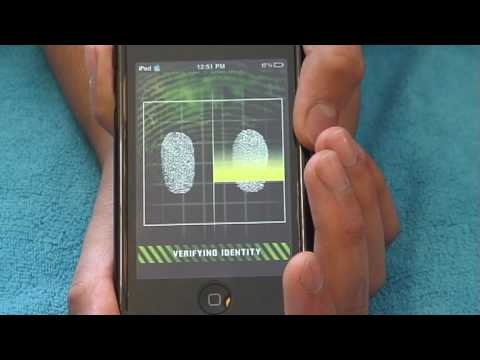The latest hot feature being seen for the next-gen smartphone is fingerprint security. With the increasing amounts of personal and financial information being kept on mobile devices, strict access gained through fingerprint security is becoming the new norm.
Currently, there is only one smart phone – the 2011 Motorola Atrix – that uses fingerprint security as a means of unlocking the device. That in itself should give it a head start in the security features running, but Apple is very close behind.
Current Status
In summer 2012, Apple Inc put in a bid to acquire fingerprint security company AuthenTec for $356 million to develop a product for its use with Apple consumer devices, according to All Things D. The proposed deal has to go in front of shareholders to get approval, and if voting goes positively, Apple will take over the company on October 4th. So it’s not too far-fetched to guess that the iPhone 6 (or whatever it may be called) will have fingerprint security aspects within the device.
On the Horizon
Should Apple’s acquisition of AuthenTec be finalized in October, the fingerprint technology used in the next generation of iPhones could take shape in several ways. There might be a fingerprint scanner built under the main screen, requiring your thumbprint to unlock the phone and its accounts, or it may take the form of a sensor on the phone’s back side, whereby rolling your thumb across it will allow access. Very “Mission: Impossible.”
Eye on Identity Protection
In some ways, the elements of fingerprint security are not entirely dissimilar to the identity security offered by the likes of Lifelock.com in such cases. As smartphones grow increasingly in sophistication and complexity, with connections to email, credit card accounts and more, the chances are greater that mere number or pattern codes on smartphones aren’t enough to protect against a stolen or lost phone. And that could cause big problems for one’s personal accounts and online identity.
Original Method
As PC World noted, most smartphones today have either a simple 4-digit code to unlock, or a pattern defined on a finger swipe code. But most phone manufacturers know that these are not the most secure options available. Creating a new method to correctly identify the phone owner through a fingerprint authentication will help prevent against unauthorized data access if the phone goes missing.
Competition is High
Some have observed that both Apple and Google (with its Android phone platform) are competing to offer phone users everything in their world through a single sign-in. But the convenience of that single sign-in is offset by risks of having your personal information uncovered too easily. Using fingerprint security options should be a boon to security advocates and users alike, while keeping the convenience.
There will almost definitely be a future in which your fingers will be the only access you have to your phone. How and when that takes shape will soon be on display.






